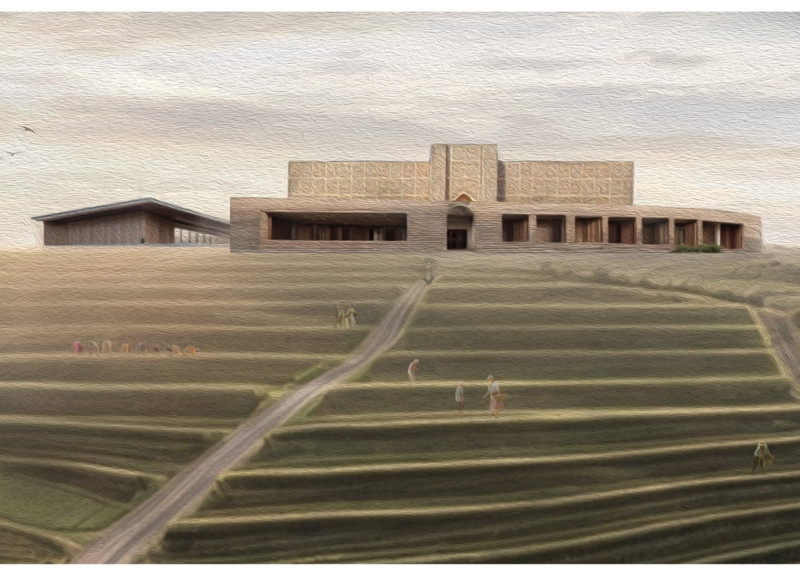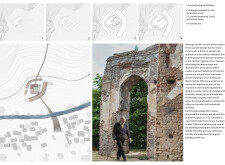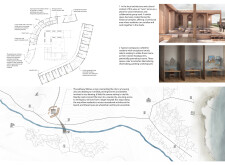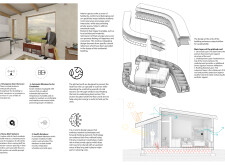5 key facts about this project
## Overview
Located in an area characterized by rice fields and an incomplete historical structure, the project focuses on reconnecting elderly residents with their community. This initiative aims to enhance social interactions that acknowledge both historical significance and contemporary needs, particularly in light of the challenges posed by urbanization and environmental disruptions such as flooding.
## Spatial Configuration and Accessibility
The design features a careful layout that integrates public and private spaces, enabling social engagement while providing areas for reflection. The existing historical structure serves as a focal point for the new construction, fostering a dialogue between past and present. Pathways have been designed to connect residential units to the surrounding landscape, enhancing accessibility and encouraging participation in local economic activities.
## Material Palette and Sustainable Technologies
Materials are selected for their functional and cultural relevance. Local stone and timber are employed extensively, integrating the structure with its geological and cultural identity while offering warmth and familiarity. The design incorporates smart technologies, including windows that adjust to internal environmental conditions, a rainwater harvesting system, and pitched roofs for enhanced ventilation. These elements collectively contribute to the building's energy efficiency and environmental sustainability.
## Emotional and Cultural Resonance
Interior spaces are designed to evoke nostalgia through the inclusion of traditional architectural motifs, fostering connections to the residents' collective history. This approach not only fulfills practical needs but also enhances emotional well-being, creating an environment that supports both community interaction and individual reflection.

























































